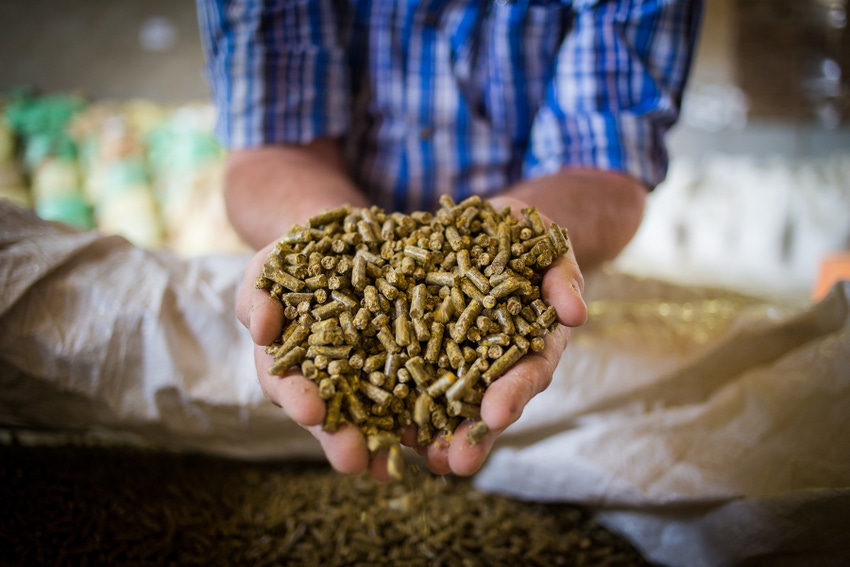Circular ag project examines co-product pellet durability
Project looks at how to include more co-products from agriculture and human food industry in pelleted animal feed.
July 30, 2020

Pelleted animal feed contains a large share of cereals, and to further move to circular agriculture, more co-products should be used to feed animals such as pigs and chickens, according to Wageningen University & Research (WUR) in the Netherlands. However, replacing cereals in animal feed can be challenging, because in addition to providing nutritional value, cereals also make the pellets stronger.
To replace cereals in animal feed with less-sticky co-products from circular agriculture, there is an "urgent need to find out how animal feed pellets stay intact, from factory to animal," WUR said.
In the "Pelleting in the Circular Agriculture" (PCA) project, a unique, Wageningen-based collaboration of experts from animal science, process technology and physics is investigating how to make sustainable animal feed and give power to the pellet.
The PCA project is looking at how to include more co-products from agriculture and the human food industry in pelleted feed, WUR said. Examples include co-products that are released during the production of food or biofuels or those that come from discarded foodstuffs. These co-products have other physical and chemical properties than complete cereals.
Menno Thomas from Zetadec, co-coordinator of the project, said, “The main problem of replacing cereals by co-products in pellet feed is that such modifications weaken the pellets, making them brittle. This leads to losses throughout the entire chain, from production and transport to storage, and even in less nutrition during feeding pigs and chickens. The challenge is then to find new ways to incorporate these co-products into animal feed.”
WUR said the project provides "insight at a microscopic level into the physical and chemical properties of animal feed" using a combination of 3D imaging and mechanical measurements.
"During the production of animal feed, basic ingredients are mixed, after which moisture and heat are added. The mixture is then pressed into pellets," Joshua Dijksman, WUR assistant professor of physical chemistry and soft matter, said. "We will study all these stages of production in depth and look at how we can optimize the process for processing co-products in animal feed. The aim is to discover how we can make high-quality feed pellets of the future, without having to use cereals."
Workshops
WUR said the PCA project aims to combine fundamental and applied sciences by relating studies at the microscopic level to those at a pilot factory level.
Additionally, WUR said the research findings will be actively disseminated to feed professionals via workshops organized by the Feed Design Lab and e-learning modules developed by educational professionals with the Aeres Training Centre International.
“In this way, we believe that we can provide feed manufacturers with new knowledge and tools that allow them to make their feeds more fit for the circular agriculture,” project co-coordinator Guido Bosch from the WUR Animal Nutrition Group noted.
In this public/private collaborative project, WUR works together with a host of partners and from across the sector, including: Zetadec, Agrifirm, DSM, Elanco Animal Health, Phileo by Lesaffre, Pelleting Technology Netherlands, VICTAM Foundation, Feed Design Lab and Aeres Training Centre International.
You May Also Like


.png?width=300&auto=webp&quality=80&disable=upscale)
